18 Travel Experiences You’ll Never Forget Plus 2 You Absolutely Must Do
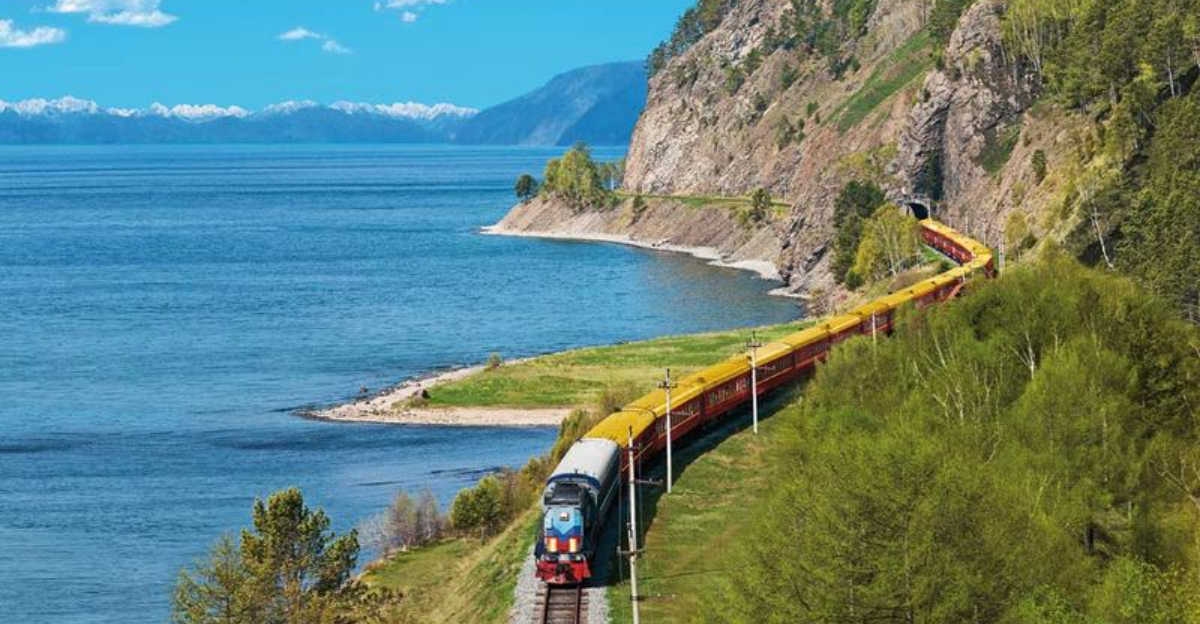
What if one trip could change the way you see the world—and yourself? Some travel moments go beyond sightseeing. They shift your perspective, ignite your curiosity, and stay with you long after you’ve unpacked.
I’ve gathered 20 unforgettable adventures that do just that—experiences that stir the soul and remind us why we fell in love with travel in the first place. Imagine drifting silently in a hot air balloon over Cappadocia at sunrise, or locking eyes with a wild orangutan in the Bornean rainforest.
These aren’t just bucket list items—they’re moments that leave you breathless, grateful, and more connected to this beautiful planet. So, which of these life-changing journeys will you take first?
1. Hot Air Ballooning in Cappadocia

Floating silently above Cappadocia’s otherworldly landscape as the sun rises is pure magic. Hundreds of colorful balloons dot the sky while the fairy chimneys and cave dwellings below glow in golden morning light.
The gentle drift through the air gives you a bird’s-eye view of this ancient Turkish region shaped by volcanic eruptions and centuries of human habitation. Many pilots will dip the basket close to the rock formations for incredible photo opportunities.
The traditional champagne toast after landing celebrates an experience that feels more like a dream than reality. Book at least 3-4 months ahead as flights fill quickly!
2. Safari in the Serengeti

Nothing prepares you for your first lion sighting in the wild. The Serengeti’s endless plains host the greatest concentration of wildlife on Earth, where the circle of life plays out in dramatic fashion daily.
Watching the Great Migration, when over two million wildebeest and zebra traverse the savanna, will humble even seasoned travelers. Your safari guide might track fresh paw prints to find a leopard lounging in an acacia tree or spot distant elephant herds moving like shadows across golden grasslands.
Evenings bring breathtaking sunsets and campfire stories under stars so bright they seem artificial. The primal sounds of Africa’s night chorus will forever change how you see our natural world.
3. Seeing the Northern Lights in Iceland
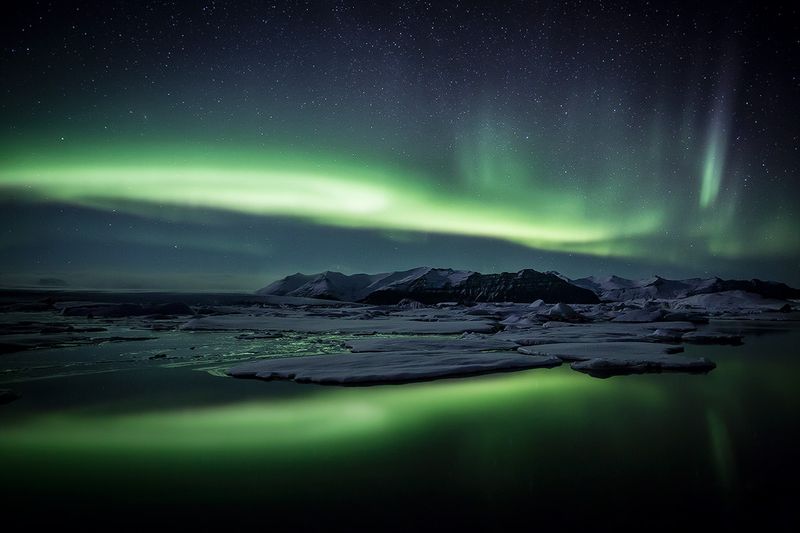
When green and purple ribbons dance across Iceland’s night sky, time seems to stand still. The aurora borealis creates a natural light show so spectacular that many witnesses find themselves speechless or moved to tears.
Iceland’s dramatic landscapes of black beaches, glaciers, and volcanic terrain provide the perfect backdrop for this celestial performance. The lights appear suddenly – sometimes as faint wisps, other times as vibrant curtains that fill the entire horizon.
Local Icelanders share fascinating folklore about these lights while you wait in the cold darkness. September through March offers the best viewing opportunities, though patience is essential as this natural phenomenon follows no schedule but its own.
4. Hiking the Inca Trail to Machu Picchu
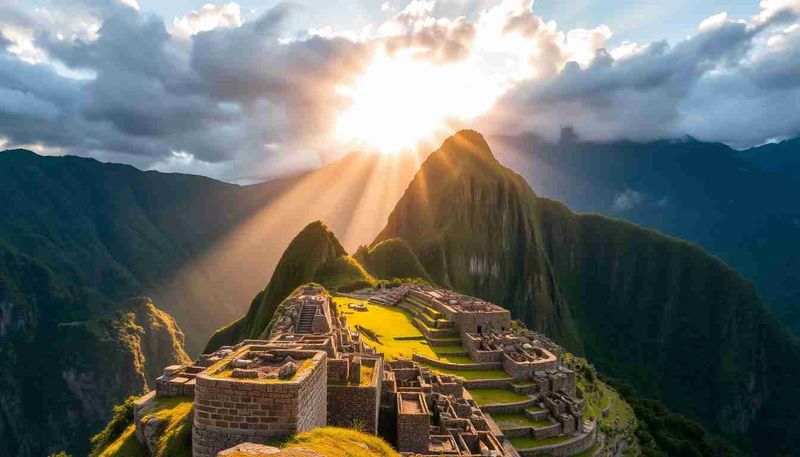
Your legs might burn from climbing ancient stone steps, but rounding that final corner to see Machu Picchu through the Sun Gate makes every step worthwhile. This 26-mile journey follows the original pilgrimage route of the Incas through cloud forests and mountain passes.
Along the way, you’ll explore lesser-known ruins without crowds, forming bonds with fellow hikers and local porters who share stories of their Quechua heritage. The biodiversity is astonishing – orchids, hummingbirds, and possibly even spectacled bears make appearances.
When you finally reach the iconic citadel at dawn, watching the sun illuminate those perfect stone walls creates a connection to history that no day-trip could match.
5. Snorkeling the Great Barrier Reef
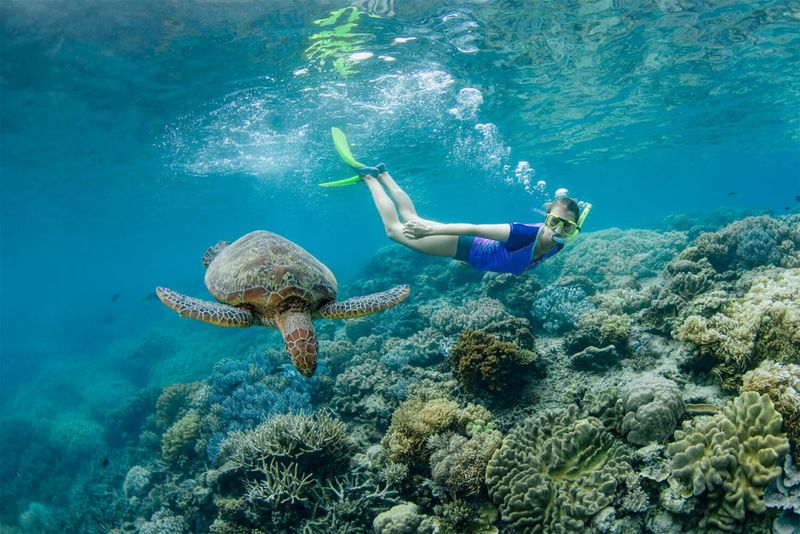
Slipping beneath the surface of Australia’s turquoise waters reveals an underwater metropolis teeming with life. The Great Barrier Reef stretches over 1,400 miles and hosts more biodiversity than any other UNESCO site on Earth.
Sea turtles glide effortlessly past as clownfish peek from their anemone homes. The kaleidoscope of coral formations – from delicate branches to massive brain corals – creates an alien landscape that defies imagination.
Though climate change threatens this fragile ecosystem, responsible operators now focus on conservation education during excursions. The moment a curious parrotfish approaches or you spot your first reef shark will forever change how you view our oceans and their importance to our planet.
6. Sailing through the Galápagos Islands

Marine iguanas snort salt water beside you while blue-footed boobies perform mating dances just feet away. The Galápagos Islands remain one of the few places where wildlife shows absolutely no fear of humans.
Sailing between these volcanic islands aboard a small expedition vessel gives you access to pristine beaches and hidden coves unreachable by day-trippers. Snorkeling alongside playful sea lion pups or gentle giant tortoises creates memories of interspecies connection that feel almost spiritual.
Darwin’s living laboratory continues to evolve before your eyes, with each island hosting unique species found nowhere else on Earth. The profound understanding of evolution and adaptation you gain here transforms how you view life itself.
7. Exploring Petra by Candlelight

Walking through the narrow Siq canyon at night, following a path illuminated only by thousands of candles, creates an atmosphere of anticipation unlike any other travel experience. The flickering lights cast dancing shadows on the rose-colored sandstone walls that tower above.
As the canyon opens, the Treasury’s magnificent façade appears like a mirage, bathed in the warm glow of candlelight. Bedouin guides share ancient stories while traditional music echoes against the 2,000-year-old architecture.
This nighttime perspective offers a mystical dimension to Jordan’s most famous archaeological site that day visitors miss entirely. The stars above, the silence broken only by soft music, and the knowledge that you’re walking the same path as the ancient Nabataeans creates a profound connection across millennia.
8. Road Tripping the Pacific Coast Highway

Freedom hits differently when you’re cruising California’s Highway 1 with the windows down and Pacific waves crashing beside you. This legendary coastal route hugs cliffs, crosses iconic bridges, and winds through charming seaside towns between San Francisco and San Diego.
Big Sur’s dramatic meeting of mountains and ocean creates vistas so stunning you’ll pull over repeatedly just to stare in awe. Sea lions bark from rocky outcroppings while migrating whales might make surprise appearances offshore.
The journey itself becomes the destination as you discover hidden beaches, redwood groves, and roadside farm stands selling fresh strawberries. Taking your time – stopping to watch surfers at sunset or sharing fish tacos with locals – reveals California’s soul beyond the postcard views.
9. Swimming with Pigs in the Bahamas

Your boat approaches a pristine beach where something utterly unexpected happens – a dozen pink pigs paddle eagerly toward you through crystal-clear Caribbean waters! This surreal encounter on Big Major Cay in the Exumas has become the Bahamas’ most famous non-human residents.
Nobody knows exactly how these pigs first arrived on this uninhabited island, though local legends suggest they survived a shipwreck or were left by sailors planning to return for a pork dinner. Today, they live a charmed life, swimming out to greet visitors hoping for treats.
Floating alongside these surprisingly graceful swimmers in turquoise waters feels wonderfully absurd. Their enthusiastic snorts and gentle nudges create a travel story friends back home will hardly believe without photos.
10. Visiting the Pyramids of Giza
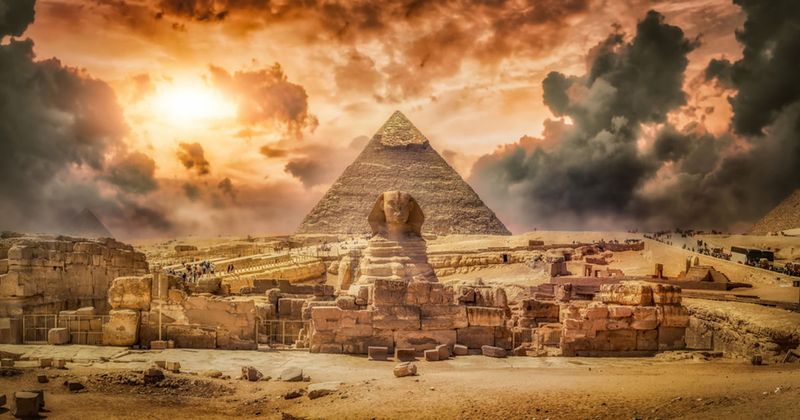
Standing before structures so ancient they were already considered old when Cleopatra was born creates a profound sense of human achievement. The Great Pyramid of Giza remained the tallest human-made structure for nearly 4,000 years, and scientists still debate exactly how these massive monuments were constructed.
Touching the massive limestone blocks that have withstood millennia of history connects you physically to the ancient Egyptians who placed them there. The Sphinx gazes eternally eastward with its enigmatic expression, keeping secrets that have puzzled visitors for centuries.
Though modern Cairo now edges close to these ancient wonders, the pyramids retain their ability to humble visitors with their sheer scale and precision. Arriving at sunrise before the crowds and heat delivers the most magical experience.
11. Helicopter Tour over Kauai

Kauai’s nickname as the “Garden Isle” makes perfect sense once you’re hovering above its impossibly green landscapes. A helicopter provides the only access to much of this Hawaiian island’s interior, where waterfalls plunge thousands of feet down the sheer cliffs of the Na Pali Coast.
Your pilot navigates into the heart of Mount Waialeale crater, one of Earth’s rainiest spots, where hundreds of waterfalls streak down emerald walls. The same landscapes that starred in Jurassic Park unfold beneath you, revealing why filmmakers are drawn to this prehistoric-feeling paradise.
When your helicopter banks over Waimea Canyon (the “Grand Canyon of the Pacific”), the contrast between red rock gorges and lush vegetation creates scenes so beautiful they barely seem real.
12. Floating in the Dead Sea
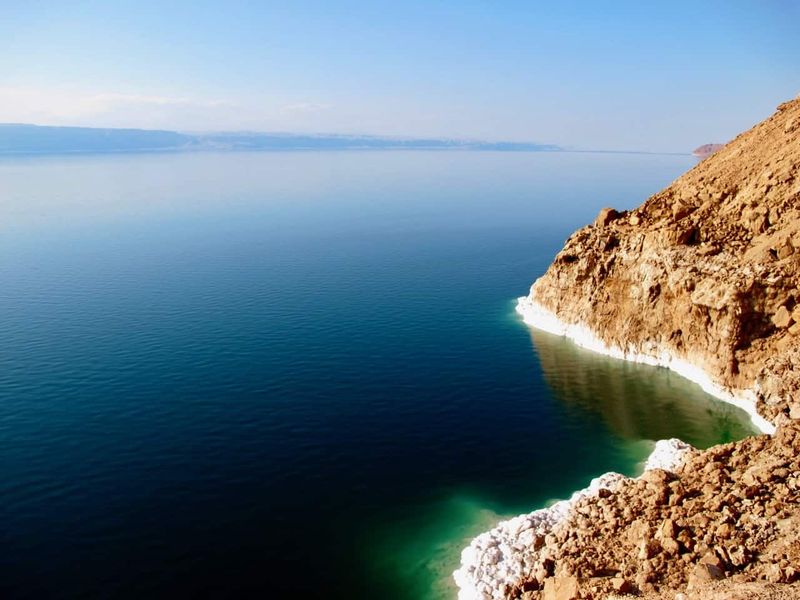
Imagine trying to swim but being physically unable to sink – that’s the bizarre sensation awaiting at the Dead Sea. This hypersaline lake between Jordan and Israel sits at Earth’s lowest land elevation and contains salt concentrations nearly ten times greater than our oceans.
Leaning back into the mineral-rich waters, your body rises effortlessly to the surface like a cork. Many visitors read newspapers or books while floating, creating those iconic photos. The water feels unusually slick, almost oily from its mineral content.
Covering yourself in the famous black mud, rich with therapeutic minerals, completes this otherworldly experience. Just remember to avoid shaving beforehand – the salt water finds every microscopic cut with startling efficiency!
13. Climbing Mount Fuji
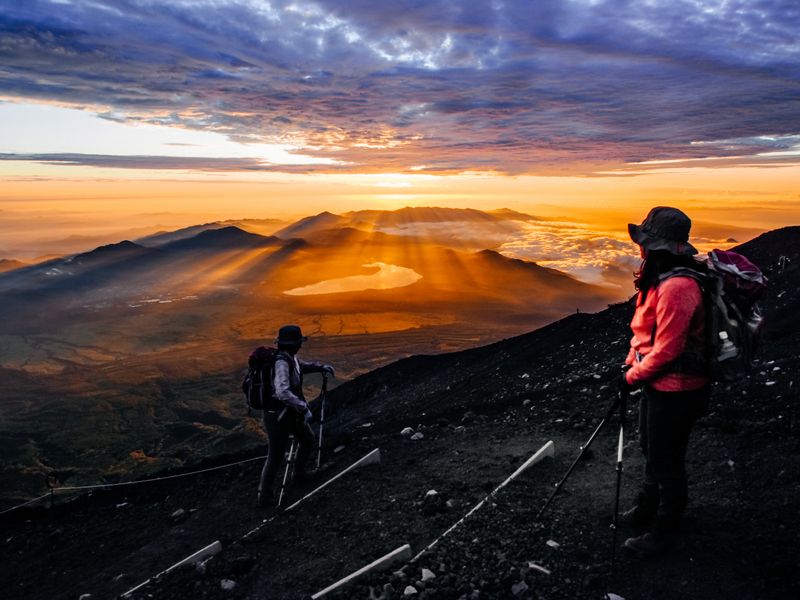
Few mountains hold such cultural significance as Japan’s perfectly symmetrical Mount Fuji. This sacred volcano has inspired artists for centuries, but experiencing its power firsthand by climbing to its 12,388-foot summit transcends any painting or photograph.
Most climbers begin their ascent at night, using headlamps to navigate the zigzagging trail. The camaraderie among hikers from around the world grows as you share the challenging journey upward, stopping at mountain huts for warm tea and encouragement.
Reaching the summit for sunrise (called “Goraiko” in Japanese) reveals a view that has moved poets to tears – the sun emerging above a sea of clouds with Japan spread below. The traditional circuit around the crater and visit to the shrine completes a journey as spiritually meaningful as it is physically demanding.
14. Dog Sledding in Alaska

The ancient partnership between humans and sled dogs comes alive as you stand on wooden runners behind a team of eager huskies. Their enthusiasm is contagious – barking excitedly before falling into focused silence once the sled releases.
Gliding through pristine snow-covered forests creates a profound silence interrupted only by the soft padding of paws and the occasional commands from your musher guide. The connection these dogs have with their human partners demonstrates centuries of cooperation and mutual respect.
Many sledding experiences in Alaska include meeting champion dogs who’ve completed the legendary Iditarod race. Learning how these remarkable athletes train, their distinct personalities, and the special bond they share with mushers adds depth to an adventure that combines adrenaline, wilderness, and cultural heritage.
15. Island Hopping in Croatia
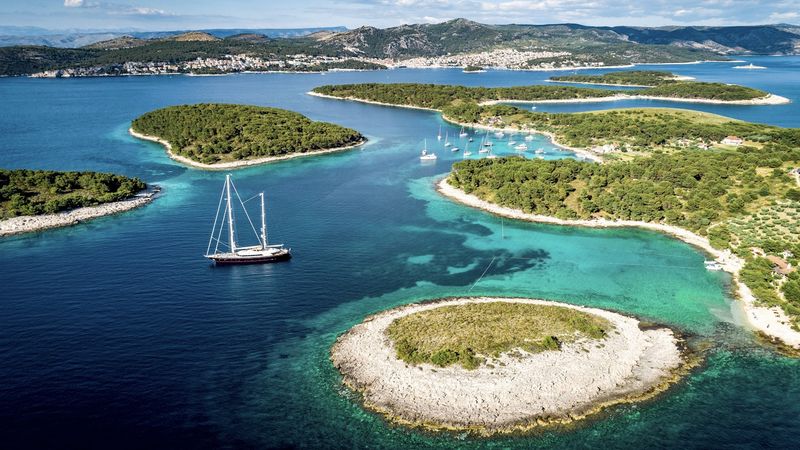
Croatia’s Dalmatian Coast hosts over 1,200 islands scattered like jewels across the impossibly blue Adriatic Sea. Sailing between these limestone treasures reveals hidden coves and medieval towns where time seems to have paused centuries ago.
Mornings might find you anchored in a secluded bay for a swim before breakfast, while afternoons bring exploration of narrow stone streets in towns like Hvar or Korčula. Local konobas (family-run restaurants) serve freshly caught seafood and wines produced from vineyards you can see on nearby hillsides.
Each island maintains its distinct character – from lavender-covered Hvar to pine-forested Mljet with its saltwater lakes. The relaxed pace of travel by boat allows genuine connections with locals who share stories of life on these timeless Mediterranean islands.
16. Walking the Great Wall of China

History becomes tangible beneath your feet when walking the ancient stones of the Great Wall. This monumental structure stretches over 13,000 miles across China’s varied landscapes, though most visitors experience just a small section near Beijing.
Venturing beyond restored tourist areas to more remote segments reveals the wall’s true character. Crumbling watchtowers offer panoramic views of mountains that seem to ripple endlessly toward the horizon. Each stone was carried by hand to these remote ridges – a sobering reminder of the human cost behind this architectural marvel.
The wall follows the natural contours of the land, sometimes at such steep angles that climbing becomes a four-limb endeavor. Watching the structure snake across mountaintops into the distance creates a visceral connection to China’s ancient past.
17. Riding the Trans-Siberian Railway
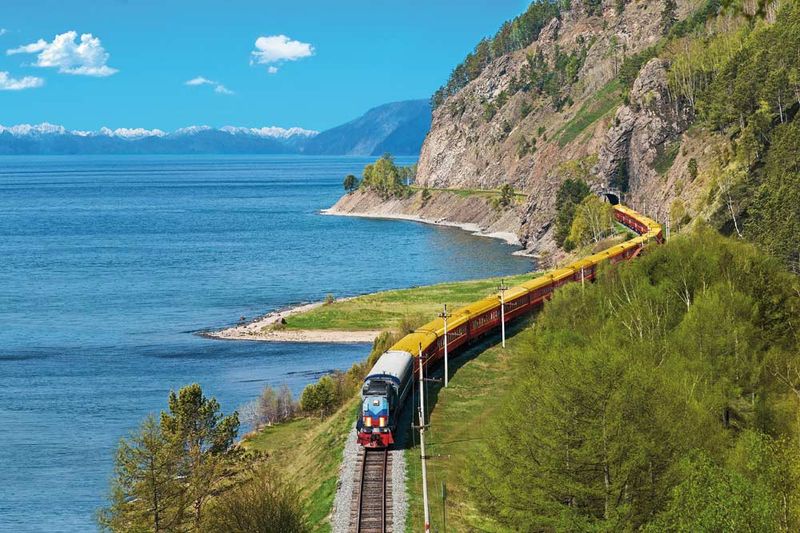
The world’s longest railway journey creates a moving window into the vastness of Russia and Mongolia. Covering over 5,700 miles from Moscow to Vladivostok, this legendary train route crosses eight time zones and provides a slow-travel experience increasingly rare in our rushed world.
Days pass watching endless birch forests, remote villages, and the expansive steppe roll by your window. Fellow passengers become temporary family – sharing meals, stories, and perhaps vodka in the dining car or your compartment.
Stopping in Siberian cities like Irkutsk allows visits to the magnificent Lake Baikal, while the Mongolian section reveals ger camps dotting endless grasslands. This journey isn’t about the destination but the meditative rhythm of the rails and the changing cultural landscape witnessed from your moving home.
18. Exploring Iceland’s Ice Caves

Stepping inside a glacier feels like entering another planet. Iceland’s ice caves form when summer meltwater carves tunnels beneath glaciers that freeze solid during winter, creating temporary cathedrals of blue ice that change shape every year.
The otherworldly blue light filtering through compressed ancient ice creates colors that seem artificially enhanced but are entirely natural. Your guide might explain how the different blue hues reveal the age and density of ice while pointing out air bubbles trapped centuries ago.
The knowledge that these caves are ephemeral – melting and reforming annually – adds poignancy to the experience. Climate change threatens these natural wonders, making each visit both breathtaking and bittersweet. Winter months (November-March) offer the only safe time to explore these transient ice palaces.
19. Trekking to Everest Base Camp
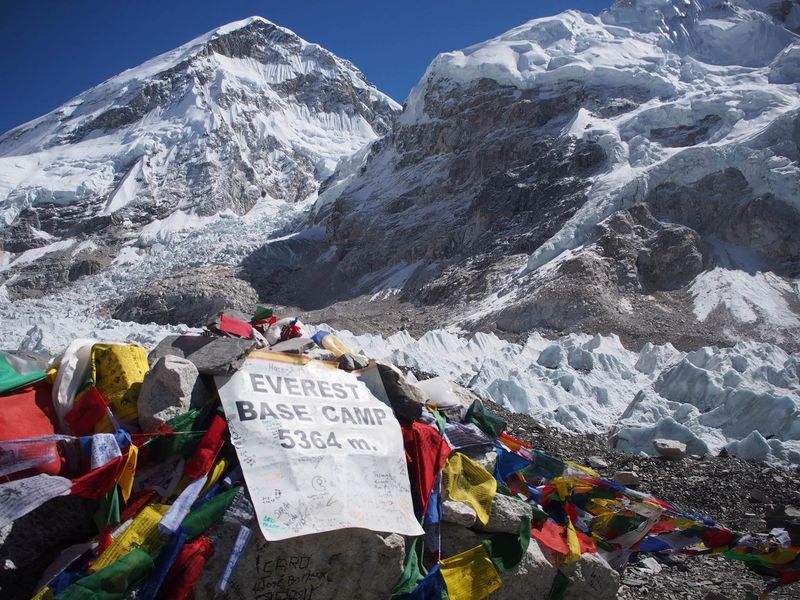
Few journeys test and reward the human spirit like the two-week trek to the foot of Earth’s highest peak. This pilgrimage through Nepal’s Khumbu Valley isn’t just about reaching Base Camp but experiencing the rich Sherpa culture and breathtaking Himalayan landscapes along the way.
Each day brings new challenges as you climb higher – crossing swaying suspension bridges over raging rivers and acclimatizing in villages with names familiar to mountaineering legends: Namche Bazaar, Tengboche, Dingboche. Prayer flags flutter at mountain passes while massive peaks like Ama Dablam and Lhotse tower overhead.
When you finally reach Base Camp at 17,600 feet, the sense of accomplishment mingles with humility before Everest’s imposing presence. This journey will forever alter your understanding of human potential and natural grandeur.
20. Visiting Antarctica
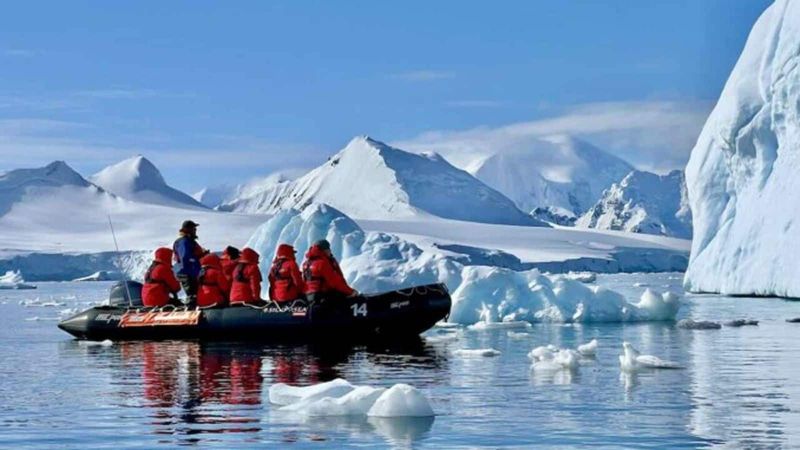
Setting foot on Earth’s most remote continent creates a profound sense of privilege – fewer people have visited Antarctica than have climbed Mount Everest. The journey begins with crossing the notorious Drake Passage, where the Atlantic and Pacific Oceans collide in often turbulent fashion.
The reward is a pristine wilderness of incomparable beauty – massive icebergs in impossible shades of blue, mountains that have never been climbed, and wildlife unafraid of humans. Watching penguins rocket through crystal waters or whales surfacing beside your zodiac creates wildlife encounters unlike anywhere else.
The continent’s silence and scale reset your perspective on our planet. The absence of permanent human settlement and strict environmental protocols maintain Antarctica as our last truly wild place – an increasingly rare and precious experience.
